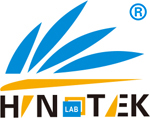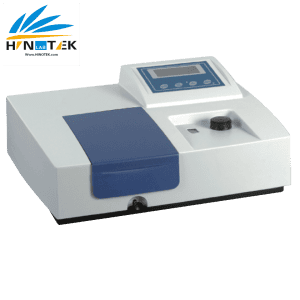Spectrophotometers are analytical instruments used to identify or confirm the chemical species, chemical structure, or concentration of substances in a sample. They work by emitting an energy source that passes through a solution, measuring light intensity at different wavelengths. The amount of light absorbed is proportional to the concentration of the substance in the sample. This principle is fundamental to various applications, including measurements of enzyme activities, determinations of protein concentrations, nucleic acid quantification, and more.
• Optical Structure: Spectrophotometers typically use either a single beam or a double beam optical design. Single beam instruments have a single light path, requiring manual switching between reference and sample cuvettes. Double beam instruments split the light into two beams, allowing for simultaneous measurement of the sample and a reference, which generally provides more reproducible results and faster operation.
• Sample Throughput: Consider the volume and number of samples you need to process. Some instruments are designed for single samples, while others can accommodate multiple samples or microplates for higher throughput.
• Detection Limits and Data Quality: The sensitivity and accuracy required for your analysis are critical. Factors like bandwidth and detector quality influence the reliability of measurements.
• Measurement Speed and Integration Time: The time it takes to perform a measurement can be important, especially for high-throughput applications or when analyzing dynamic processes.
• Cost: The instrument’s price and the cost of associated consumables are practical considerations.
• Size and Footprint: The physical size of the instrument and the available laboratory space should be taken into account.
• Software and Data Management: User-friendly software and efficient data management capabilities can significantly enhance usability and workflow.
• Visible Spectrophotometer: These models operate within the visible light range (typically 320-1000 nm) and are commonly used for routine laboratory work.
• Split Beam Spectrophotometer: These use a beam-splitter to rapidly alternate the light path between the sample and reference, providing improved stability and accuracy.
• Double Beam Spectrophotometer: Similar to split beam, these instruments have two distinct beams, one for the sample and one for the reference, allowing for simultaneous measurement and background correction.
• Fluorescent Spectrophotometer: These excite the sample at one wavelength and measure the emitted light at a different wavelength, ideal for applications involving fluorescent substances.
• Micro Spectrophotometer: Also known as microvolume spectrophotometers, these require only very small sample volumes (as low as 0.5-2 µL), which is particularly useful for precious samples like DNA and RNA.
• NIR Spectrophotometer: These extend the measurement range into the near-infrared region (typically 700-2500 nm), suitable for analyzing vibrational overtones and combinations.
• Infrared Spectrophotometer: These instruments operate in the infrared region (typically 2500-5000 nm and beyond), providing information about molecular vibrations and functional groups.
• Atomic Absorption Spectrophotometer: These are specifically designed to measure the concentration of specific metal elements in a sample.
By carefully considering your application requirements and the factors outlined above, you can confidently choose the most suitable spectrophotometer from HINOTEK’s extensive selection. Our range of instruments, including various types and configurations, ensures that we have a spectrophotometer to meet the needs of your laboratory and attract customers worldwide.













































